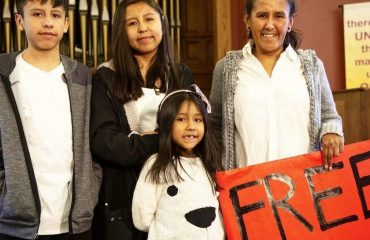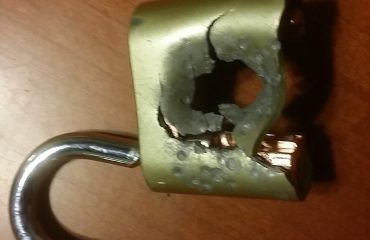MARK BRODIE: People who cross the border into southern Arizona have been dying at a faster rate than at any time in the past several years, a new report suggests. With me to discuss this deadly shift in migration is KJZZ’s Michel Marizco from our Fronteras Desk in Tucson. Hi, Michel.
MICHEL MARIZCO: Hey, good morning.
BRODIE: So, so far this year, the remains of 181 people have been found in southern Arizona. But that doesn’t give us the whole picture, right. What else do we need to know here?
MARIZCO: Right. So the data comes from Humane Borders, a non-governmental organization that puts out water stations in the desert for undocumented immigrants. The 181 remains that were found pertain exactly to that: people who were found. We don’t know how many people have not been found out in the desert. So there are certain things that need to be taken into account — for example, groups of people who have said that they passed bodies in the desert that were never recovered. And so the report gives us a really good indication of what’s going on. But again, I always stress with these things, we don’t know how many people actually died. It’s always more.
BRODIE: Well Michel, is it’s still U.S. policy to drive undocumented border crossers further out into the desert?
MARIZCO: Yeah. I mean, so the U.S. Border Patrol has had a policy in place here in southern Arizona called Prevention Through Deterrence, where they would place agents in highly visible areas. Part of this also involves sealing off urban areas — like Nogales, for example, Douglas — and making it harder for people to cross through those areas. The problem with that strategy has always been, continues to be that in more remote areas, people are still able to cross. So for example, on Tohono O’odham Indian nation in southern Arizona, people are still able to cross through there. It’s a fairly bleak, desolate part of the desert to try to walk for several days through.
BRODIE: Mitchell, how much can Trump administration border policies be considered responsible for increasing the number of victims?
MARIZCO: So a policy that was put into place earlier this year, allegedly in response to COVID-19 — though there does seem to now be some understanding that this is actually purposefully done for migrants — was a Title 42 to expulsion. This is a health protocol from the Centers for Disease Control and Prevention that was supposed to stop any sort of due process so that they can literally expel people from the country as fast as they found them. This year — I was just looking through their stats for fiscal year 2020 — there has been about 50,000 people who were deemed either inadmissible under Title 8 or 8,000 people under Title 42 who were expelled. And that’s just on the south was border, mind you. These people were shipped back through whatever the nearest port was. So that could be something as remote as a Lukeville port of entry or the Sasabe port of entry, where there’s little to no resources for anybody who might need it.
BRODIE: Now Michel, you’ve reported on the humanitarian aid groups and law enforcement agencies who try to rescue people in the desert. What does that kind of work look like this year, given everything else going on?
MARIZCO: Yes. So for example, the U.S. Border Patrol’s BORSTAR, the search and rescue or enforcement arm of the Border Patrol. BORSTAR has so far documented well over 1,000 rescues this year. That’s more than they had in all of last year. That’s a hugely significant number because it really goes to show just how many people are physically calling for help using like cell phones to dial and phones planted by the Homeland Security Department in the desert to ask for help, essentially giving up on trying to cross. That’s been one marker. You know, I’m also thinking — and you and I have had conversations about No More Deaths, the organization that the Border Patrol itself is actually going after. They continue working. They continue working with undocumented immigrants in the desert, even though they, of course, are now the focus of law enforcement strategies to end those operations. So it’s a really tense situation. And of course in the meantime, the bottom line, as it has for many years, the U.S. government’s border policies continue lending sort of a mechanism for people to become vulnerable and then die out desert.
BRODIE: All right. Certainly, plenty more to keep our eyes on here. That is KJZZ Michel Marizco with the Fronteras Desk in Tucson. Michel, thank you as always. Hey. Thank you.
Listen to the full interview on KJZZ here


